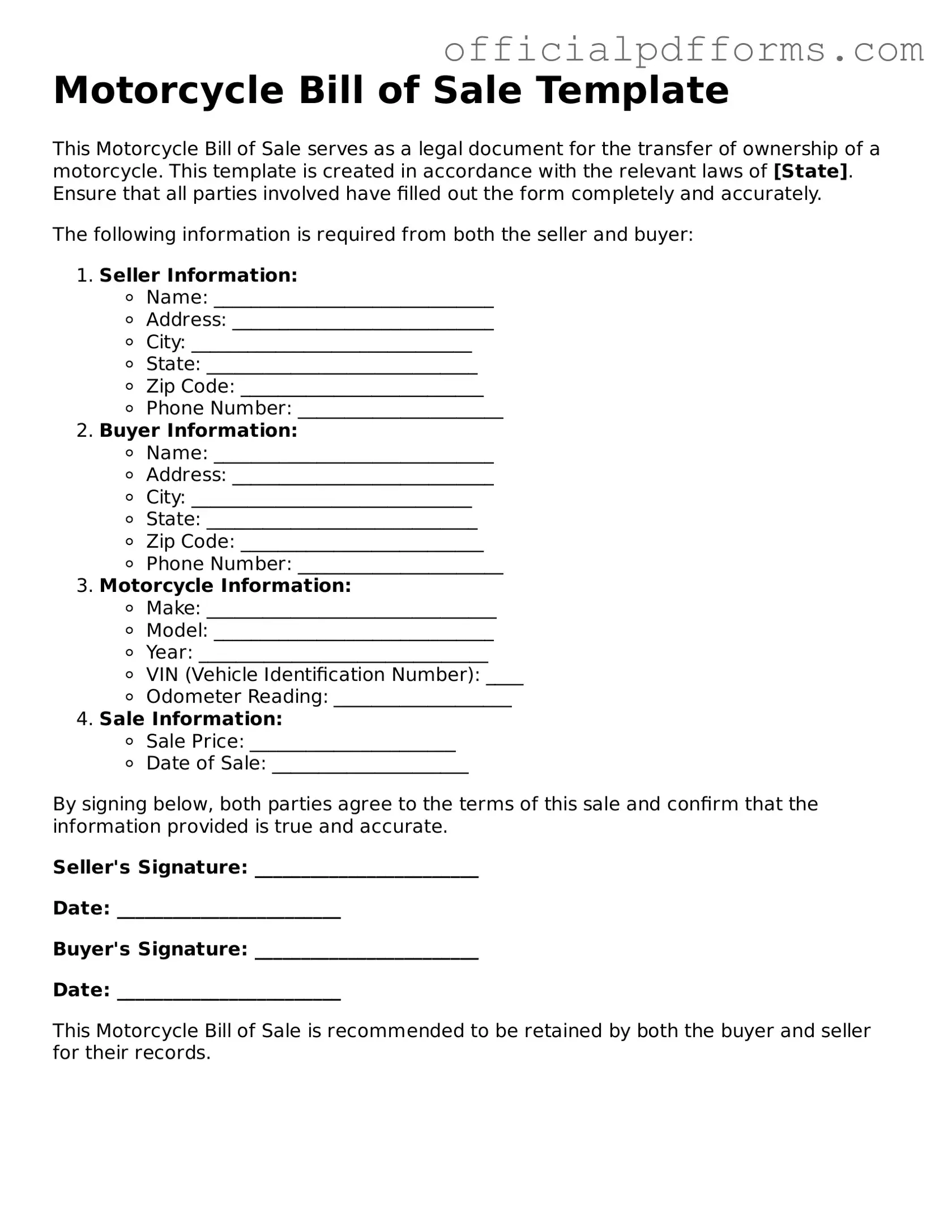Valid Motorcycle Bill of Sale Document
A Motorcycle Bill of Sale is a legal document that records the sale and transfer of ownership of a motorcycle from one party to another. This form serves as proof of the transaction and outlines important details such as the purchase price, vehicle identification number, and the names of both the buyer and seller. To ensure a smooth transfer, it’s essential to fill out this form accurately.
Ready to get started? Fill out the form by clicking the button below.
Access Form Online
